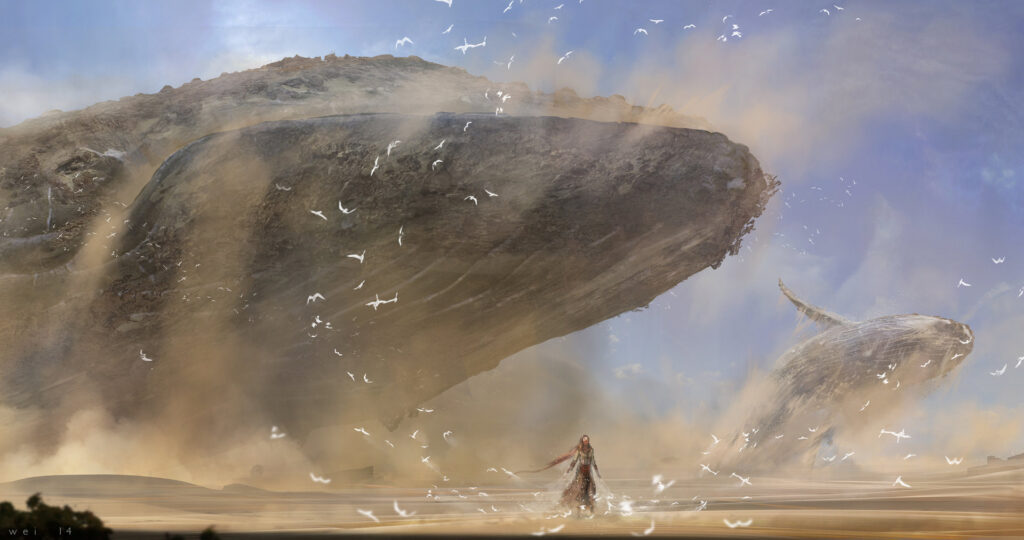- Home
- My World Building
- Bestiary
- csah monor
The Csah’Monor
// this article is older and will be updated later //

They are omnivorous, their food consists of plants mainly that can be found atop of the quicksand in smaller spots that are stuck together. Occasionally, if needed, they do hunt for smaller animals found in the desert that are able to live and move on top of the dry quicksand, or they hunt birds that fly closer to or walk on the ground, by jumping out of the sand, they usually only do this when larger groups of birds are present. Generally they don’t hunt for anything bigger than something dog-sized, but they would confuse a human baby or kid to be one of their small animal prey. Thus adult humans or larger animals aren’t in danger in their vicinity.
The Csah’Monor are usually found in small groups and are relatively social creatures that require company. A female only have one offspring in about every five years, as their gestation period is around 13 months. Once there is a newborn, the nearby males in the group take care of it. They always give birth on land, near the edge of the desert, after that, the newborn is carried by the males, in the first three month, while the offspring is vulnerable, it is carried inside the males mouth until its own shell and skin hardens enough to be able to swim through the quicksand and not injure themselves.
For communication they create ultra-high sounds that goes through the entire area of the Desolation, but it is only heard by them. They use a lower sound for local communication between their own group. To navigate themselves through the quicksand, they both use their hearing (to know if there is anything denser than the sand near them), their memory, and their inner “compass”.
During rain, they all come up to the surface and lay on the ground, the only movement they do is rolling onto their back so their bottom side is exposed to the rain and water. Since the Desolation is generally really hot, the water doesn’t get soaked into the sand, it evaporates almost immediately. Only exceptions are heavy, long rains where the water itself cools down the top layer of the quicksand enough to make the top layer of it somewhat muddy.
They are considered to be really beautiful, but dangerous creatures. However once you see one of them blast out of the ground, you will never forget that sight and neither the sand.
